optimized itoa function
Solution 1
The first step to optimizing your code is getting rid of the arbitrary base support. This is because dividing by a constant is almost surely multiplication, but dividing by base is division, and because '0'+n is faster than "0123456789abcdef"[n] (no memory involved in the former).
If you need to go beyond that, you could make lookup tables for each byte in the base you care about (e.g. 10), then vector-add the (e.g. decimal) results for each byte. As in:
00 02 00 80 (input)
0000000000 (place3[0x00])
+0000131072 (place2[0x02])
+0000000000 (place1[0x00])
+0000000128 (place0[0x80])
==========
0000131200 (result)
Solution 2
Terje Mathisen invented a very fast itoa() that does not require lookup tables. If you're not interested in the explanation of how it works, skip down to Performance or Implementation.
More than 15 years ago Terje Mathisen came up with a parallelized itoa() for base 10. The idea is to take a 32-bit value and break it into two chunks of 5 digits. (A quick Google search for "Terje Mathisen itoa" gave this post: http://computer-programming-forum.com/46-asm/7aa4b50bce8dd985.htm)
We start like so:
void itoa(char *buf, uint32_t val)
{
lo = val % 100000;
hi = val / 100000;
itoa_half(&buf[0], hi);
itoa_half(&buf[5], lo);
}
Now we can just need an algorithm that can convert any integer in the domain [0, 99999] to a string. A naive way to do that might be:
// 0 <= val <= 99999
void itoa_half(char *buf, uint32_t val)
{
// Move all but the first digit to the right of the decimal point.
float tmp = val / 10000.0;
for(size_t i = 0; i < 5; i++)
{
// Extract the next digit.
int digit = (int) tmp;
// Convert to a character.
buf[i] = '0' + (char) digit;
// Remove the lead digit and shift left 1 decimal place.
tmp = (tmp - digit) * 10.0;
}
}
Rather than use floating-point, we will use 4.28 fixed-point math because it is significantly faster in our case. That is, we fix the binary point at the 28th bit position such that 1.0 is represented as 2^28. To convert into fixed-point, we simply multiply by 2^28. We can easily round down to the nearest integer by masking with 0xf0000000, and we can extract the fractional portion by masking with 0x0fffffff.
(Note: Terje's algorithm differs slightly in the choice of fixed-point format.)
So now we have:
typedef uint32_t fix4_28;
// 0 <= val <= 99999
void itoa_half(char *buf, uint32_t val)
{
// Convert `val` to fixed-point and divide by 10000 in a single step.
// N.B. we would overflow a uint32_t if not for the parentheses.
fix4_28 tmp = val * ((1 << 28) / 10000);
for(size_t i = 0; i < 5; i++)
{
int digit = (int)(tmp >> 28);
buf[i] = '0' + (char) digit;
tmp = (tmp & 0x0fffffff) * 10;
}
}
The only problem with this code is that 2^28 / 10000 = 26843.5456, which is truncated to 26843. This causes inaccuracies for certain values. For example, itoa_half(buf, 83492) produces the string "83490". If we apply a small correction in our conversion to 4.28 fixed-point, then the algorithm works for all numbers in the domain [0, 99999]:
// 0 <= val <= 99999
void itoa_half(char *buf, uint32_t val)
{
fix4_28 const f1_10000 = (1 << 28) / 10000;
// 2^28 / 10000 is 26843.5456, but 26843.75 is sufficiently close.
fix4_28 tmp = val * ((f1_10000 + 1) - (val / 4);
for(size_t i = 0; i < 5; i++)
{
int digit = (int)(tmp >> 28);
buf[i] = '0' + (char) digit;
tmp = (tmp & 0x0fffffff) * 10;
}
}
Terje interleaves the itoa_half part for the low & high halves:
void itoa(char *buf, uint32_t val)
{
fix4_28 const f1_10000 = (1 << 28) / 10000;
fix4_28 tmplo, tmphi;
lo = val % 100000;
hi = val / 100000;
tmplo = lo * (f1_10000 + 1) - (lo / 4);
tmphi = hi * (f1_10000 + 1) - (hi / 4);
for(size_t i = 0; i < 5; i++)
{
buf[i + 0] = '0' + (char)(tmphi >> 28);
buf[i + 5] = '0' + (char)(tmplo >> 28);
tmphi = (tmphi & 0x0fffffff) * 10;
tmplo = (tmplo & 0x0fffffff) * 10;
}
}
There is an additional trick that makes the code slightly faster if the loop is fully unrolled. The multiply by 10 is implemented as either a LEA+SHL or LEA+ADD sequence. We can save 1 instruction by multiplying instead by 5, which requires only a single LEA. This has the same effect as shifting tmphi and tmplo right by 1 position each pass through the loop, but we can compensate by adjusting our shift counts and masks like this:
uint32_t mask = 0x0fffffff;
uint32_t shift = 28;
for(size_t i = 0; i < 5; i++)
{
buf[i + 0] = '0' + (char)(tmphi >> shift);
buf[i + 5] = '0' + (char)(tmplo >> shift);
tmphi = (tmphi & mask) * 5;
tmplo = (tmplo & mask) * 5;
mask >>= 1;
shift--;
}
This only helps if the loop is fully-unrolled because you can precalculate the value of shift and mask for each iteration.
Finally, this routine produces zero-padded results. You can get rid of the padding by returning a pointer to the first character that is not 0 or the last character if val == 0:
char *itoa_unpadded(char *buf, uint32_t val)
{
char *p;
itoa(buf, val);
p = buf;
// Note: will break on GCC, but you can work around it by using memcpy() to dereference p.
if (*((uint64_t *) p) == 0x3030303030303030)
p += 8;
if (*((uint32_t *) p) == 0x30303030)
p += 4;
if (*((uint16_t *) p) == 0x3030)
p += 2;
if (*((uint8_t *) p) == 0x30)
p += 1;
return min(p, &buf[15]);
}
There is one additional trick applicable to 64-bit (i.e. AMD64) code. The extra, wider registers make it efficient to accumulate each 5-digit group in a register; after the last digit has been calculated, you can smash them together with SHRD, OR them with 0x3030303030303030, and store to memory. This improves performance for me by about 12.3%.
Vectorization
We could execute the above algorithm as-is on the SSE units, but there is almost no gain in performance. However, if we split the value into smaller chunks, we can take advantage of SSE4.1 32-bit multiply instructions. I tried three different splits:
- 2 groups of 5 digits
- 3 groups of 4 digits
- 4 groups of 3 digits
The fastest variant was 4 groups of 3 digits. See below for the results.
Performance
I tested many variants of Terje's algorithm in addition to the algorithms suggested by vitaut and Inge Henriksen. I verified through exhaustive testing of inputs that each algorithm's output matches itoa().
My numbers are taken from a Westmere E5640 running Windows 7 64-bit. I benchmark at real-time priority and locked to core 0. I execute each algorithm 4 times to force everything into the cache. I time 2^24 calls using RDTSCP to remove the effect of any dynamic clock speed changes.
I timed 5 different patterns of inputs:
- itoa(0 .. 9) -- nearly best-case performance
- itoa(1000 .. 1999) -- longer output, no branch mispredicts
- itoa(100000000 .. 999999999) -- longest output, no branch mispredicts
- itoa(256 random values) -- varying output length
- itoa(65536 random values) -- varying output length and thrashes L1/L2 caches
The data:
ALG TINY MEDIUM LARGE RND256 RND64K NOTES NULL 7 clk 7 clk 7 clk 7 clk 7 clk Benchmark overhead baseline TERJE_C 63 clk 62 clk 63 clk 57 clk 56 clk Best C implementation of Terje's algorithm TERJE_ASM 48 clk 48 clk 50 clk 45 clk 44 clk Naive, hand-written AMD64 version of Terje's algorithm TERJE_SSE 41 clk 42 clk 41 clk 34 clk 35 clk SSE intrinsic version of Terje's algorithm with 1/3/3/3 digit grouping INGE_0 12 clk 31 clk 71 clk 72 clk 72 clk Inge's first algorithm INGE_1 20 clk 23 clk 45 clk 69 clk 96 clk Inge's second algorithm INGE_2 18 clk 19 clk 32 clk 29 clk 36 clk Improved version of Inge's second algorithm VITAUT_0 9 clk 16 clk 32 clk 35 clk 35 clk vitaut's algorithm VITAUT_1 11 clk 15 clk 33 clk 31 clk 30 clk Improved version of vitaut's algorithm LIBC 46 clk 128 clk 329 clk 339 clk 340 clk MSVCRT12 implementation
My compiler (VS 2013 Update 4) produced surprisingly bad code; the assembly version of Terje's algorithm is just a naive translation, and it's a full 21% faster. I was also surprised at the performance of the SSE implementation, which I expected to be slower. The big surprise was how fast INGE_2, VITAUT_0, and VITAUT_1 were. Bravo to vitaut for coming up with a portable solution that bests even my best effort at the assembly level.
Note: INGE_1 is a modified version of Inge Henriksen's second algorithm because the original has a bug.
INGE_2 is based on the second algorithm that Inge Henriksen gave. Rather than storing pointers to the precalculated strings in a char*[] array, it stores the strings themselves in a char[][5] array. The other big improvement is in how it stores characters in the output buffer. It stores more characters than necessary and uses pointer arithmetic to return a pointer to the first non-zero character. The result is substantially faster -- competitive even with the SSE-optimized version of Terje's algorithm. It should be noted that the microbenchmark favors this algorithm a bit because in real-world applications the 600K data set will constantly blow the caches.
VITAUT_1 is based on vitaut's algorithm with two small changes. The first change is that it copies character pairs in the main loop, reducing the number of store instructions. Similar to INGE_2, VITAUT_1 copies both final characters and uses pointer arithmetic to return a pointer to the string.
Implementation
Here I give code for the 3 most interesting algorithms.
TERJE_ASM:
; char *itoa_terje_asm(char *buf<rcx>, uint32_t val<edx>)
;
; *** NOTE ***
; buf *must* be 8-byte aligned or this code will break!
itoa_terje_asm:
MOV EAX, 0xA7C5AC47
ADD RDX, 1
IMUL RAX, RDX
SHR RAX, 48 ; EAX = val / 100000
IMUL R11D, EAX, 100000
ADD EAX, 1
SUB EDX, R11D ; EDX = (val % 100000) + 1
IMUL RAX, 214748 ; RAX = (val / 100000) * 2^31 / 10000
IMUL RDX, 214748 ; RDX = (val % 100000) * 2^31 / 10000
; Extract buf[0] & buf[5]
MOV R8, RAX
MOV R9, RDX
LEA EAX, [RAX+RAX] ; RAX = (RAX * 2) & 0xFFFFFFFF
LEA EDX, [RDX+RDX] ; RDX = (RDX * 2) & 0xFFFFFFFF
LEA RAX, [RAX+RAX*4] ; RAX *= 5
LEA RDX, [RDX+RDX*4] ; RDX *= 5
SHR R8, 31 ; R8 = buf[0]
SHR R9, 31 ; R9 = buf[5]
; Extract buf[1] & buf[6]
MOV R10, RAX
MOV R11, RDX
LEA EAX, [RAX+RAX] ; RAX = (RAX * 2) & 0xFFFFFFFF
LEA EDX, [RDX+RDX] ; RDX = (RDX * 2) & 0xFFFFFFFF
LEA RAX, [RAX+RAX*4] ; RAX *= 5
LEA RDX, [RDX+RDX*4] ; RDX *= 5
SHR R10, 31 - 8
SHR R11, 31 - 8
AND R10D, 0x0000FF00 ; R10 = buf[1] << 8
AND R11D, 0x0000FF00 ; R11 = buf[6] << 8
OR R10D, R8D ; R10 = buf[0] | (buf[1] << 8)
OR R11D, R9D ; R11 = buf[5] | (buf[6] << 8)
; Extract buf[2] & buf[7]
MOV R8, RAX
MOV R9, RDX
LEA EAX, [RAX+RAX] ; RAX = (RAX * 2) & 0xFFFFFFFF
LEA EDX, [RDX+RDX] ; RDX = (RDX * 2) & 0xFFFFFFFF
LEA RAX, [RAX+RAX*4] ; RAX *= 5
LEA RDX, [RDX+RDX*4] ; RDX *= 5
SHR R8, 31 - 16
SHR R9, 31 - 16
AND R8D, 0x00FF0000 ; R8 = buf[2] << 16
AND R9D, 0x00FF0000 ; R9 = buf[7] << 16
OR R8D, R10D ; R8 = buf[0] | (buf[1] << 8) | (buf[2] << 16)
OR R9D, R11D ; R9 = buf[5] | (buf[6] << 8) | (buf[7] << 16)
; Extract buf[3], buf[4], buf[8], & buf[9]
MOV R10, RAX
MOV R11, RDX
LEA EAX, [RAX+RAX] ; RAX = (RAX * 2) & 0xFFFFFFFF
LEA EDX, [RDX+RDX] ; RDX = (RDX * 2) & 0xFFFFFFFF
LEA RAX, [RAX+RAX*4] ; RAX *= 5
LEA RDX, [RDX+RDX*4] ; RDX *= 5
SHR R10, 31 - 24
SHR R11, 31 - 24
AND R10D, 0xFF000000 ; R10 = buf[3] << 24
AND R11D, 0xFF000000 ; R11 = buf[7] << 24
AND RAX, 0x80000000 ; RAX = buf[4] << 31
AND RDX, 0x80000000 ; RDX = buf[9] << 31
OR R10D, R8D ; R10 = buf[0] | (buf[1] << 8) | (buf[2] << 16) | (buf[3] << 24)
OR R11D, R9D ; R11 = buf[5] | (buf[6] << 8) | (buf[7] << 16) | (buf[8] << 24)
LEA RAX, [R10+RAX*2] ; RAX = buf[0] | (buf[1] << 8) | (buf[2] << 16) | (buf[3] << 24) | (buf[4] << 32)
LEA RDX, [R11+RDX*2] ; RDX = buf[5] | (buf[6] << 8) | (buf[7] << 16) | (buf[8] << 24) | (buf[9] << 32)
; Compact the character strings
SHL RAX, 24 ; RAX = (buf[0] << 24) | (buf[1] << 32) | (buf[2] << 40) | (buf[3] << 48) | (buf[4] << 56)
MOV R8, 0x3030303030303030
SHRD RAX, RDX, 24 ; RAX = buf[0] | (buf[1] << 8) | (buf[2] << 16) | (buf[3] << 24) | (buf[4] << 32) | (buf[5] << 40) | (buf[6] << 48) | (buf[7] << 56)
SHR RDX, 24 ; RDX = buf[8] | (buf[9] << 8)
; Store 12 characters. The last 2 will be null bytes.
OR R8, RAX
LEA R9, [RDX+0x3030]
MOV [RCX], R8
MOV [RCX+8], R9D
; Convert RCX into a bit pointer.
SHL RCX, 3
; Scan the first 8 bytes for a non-zero character.
OR EDX, 0x00000100
TEST RAX, RAX
LEA R10, [RCX+64]
CMOVZ RAX, RDX
CMOVZ RCX, R10
; Scan the next 4 bytes for a non-zero character.
TEST EAX, EAX
LEA R10, [RCX+32]
CMOVZ RCX, R10
SHR RAX, CL ; N.B. RAX >>= (RCX % 64); this works because buf is 8-byte aligned.
; Scan the next 2 bytes for a non-zero character.
TEST AX, AX
LEA R10, [RCX+16]
CMOVZ RCX, R10
SHR EAX, CL ; N.B. RAX >>= (RCX % 32)
; Convert back to byte pointer. N.B. this works because the AMD64 virtual address space is 48-bit.
SAR RCX, 3
; Scan the last byte for a non-zero character.
TEST AL, AL
MOV RAX, RCX
LEA R10, [RCX+1]
CMOVZ RAX, R10
RETN
INGE_2:
uint8_t len100K[100000];
char str100K[100000][5];
void itoa_inge_2_init()
{
memset(str100K, '0', sizeof(str100K));
for(uint32_t i = 0; i < 100000; i++)
{
char buf[6];
itoa(i, buf, 10);
len100K[i] = strlen(buf);
memcpy(&str100K[i][5 - len100K[i]], buf, len100K[i]);
}
}
char *itoa_inge_2(char *buf, uint32_t val)
{
char *p = &buf[10];
uint32_t prevlen;
*p = '\0';
do
{
uint32_t const old = val;
uint32_t mod;
val /= 100000;
mod = old - (val * 100000);
prevlen = len100K[mod];
p -= 5;
memcpy(p, str100K[mod], 5);
}
while(val != 0);
return &p[5 - prevlen];
}
VITAUT_1:
static uint16_t const str100p[100] = {
0x3030, 0x3130, 0x3230, 0x3330, 0x3430, 0x3530, 0x3630, 0x3730, 0x3830, 0x3930,
0x3031, 0x3131, 0x3231, 0x3331, 0x3431, 0x3531, 0x3631, 0x3731, 0x3831, 0x3931,
0x3032, 0x3132, 0x3232, 0x3332, 0x3432, 0x3532, 0x3632, 0x3732, 0x3832, 0x3932,
0x3033, 0x3133, 0x3233, 0x3333, 0x3433, 0x3533, 0x3633, 0x3733, 0x3833, 0x3933,
0x3034, 0x3134, 0x3234, 0x3334, 0x3434, 0x3534, 0x3634, 0x3734, 0x3834, 0x3934,
0x3035, 0x3135, 0x3235, 0x3335, 0x3435, 0x3535, 0x3635, 0x3735, 0x3835, 0x3935,
0x3036, 0x3136, 0x3236, 0x3336, 0x3436, 0x3536, 0x3636, 0x3736, 0x3836, 0x3936,
0x3037, 0x3137, 0x3237, 0x3337, 0x3437, 0x3537, 0x3637, 0x3737, 0x3837, 0x3937,
0x3038, 0x3138, 0x3238, 0x3338, 0x3438, 0x3538, 0x3638, 0x3738, 0x3838, 0x3938,
0x3039, 0x3139, 0x3239, 0x3339, 0x3439, 0x3539, 0x3639, 0x3739, 0x3839, 0x3939, };
char *itoa_vitaut_1(char *buf, uint32_t val)
{
char *p = &buf[10];
*p = '\0';
while(val >= 100)
{
uint32_t const old = val;
p -= 2;
val /= 100;
memcpy(p, &str100p[old - (val * 100)], sizeof(uint16_t));
}
p -= 2;
memcpy(p, &str100p[val], sizeof(uint16_t));
return &p[val < 10];
}
Solution 3
This post compares several methods of integer to string conversion aka itoa. The fastest method reported there is fmt::format_int from the {fmt} library which is 5-18 times faster than sprintf/std::stringstream and ~4 times faster than a naive ltoa/itoa implementation (the actual numbers may of course vary depending on platform).
Unlike most other methods fmt::format_int does one pass over the digits. It also minimizes the number of integer divisions using the idea from Alexandrescu's talk Fastware. The implementation is available here.
This is of course if C++ is an option and you are not restricted by the itoa's API.
Disclaimer: I'm the author of this method and the fmt library.
Solution 4
http://sourceforge.net/projects/itoa/
Its uses a big static const array of all 4-digits integers and uses it for 32-bits or 64-bits conversion to string.
Portable, no need of a specific instruction set.
The only faster version I could find was in assembly code and limited to 32 bits.
Related videos on Youtube
Nulik
A C developer, obsessed with performance. Contact for development on blockchain platforms: [email protected]
Updated on June 04, 2022Comments
-
 Nulik 5 months
Nulik 5 monthsI am thinking on how to implement the conversion of an integer (4byte, unsigned) to string with SSE instructions. The usual routine is to divide the number and store it in a local variable, then invert the string (the inversion routine is missing in this example):
char *convert(unsigned int num, int base) { static char buff[33]; char *ptr; ptr = &buff[sizeof(buff) - 1]; *ptr = '\0'; do { *--ptr="0123456789abcdef"[num%base]; num /= base; } while(num != 0); return ptr; }But inversion will take extra time. Is there any other algorithm than can be used preferably with SSE instruction to parallelize the function?
-
 Necrolis about 11 yearsunless your number strings are very large, you'll probably see a drop in performance (or at least no increase) if you use SSE. SSE string optimization is generally only viable for large bodies of text (just see the GCC and LLVM source)
Necrolis about 11 yearsunless your number strings are very large, you'll probably see a drop in performance (or at least no increase) if you use SSE. SSE string optimization is generally only viable for large bodies of text (just see the GCC and LLVM source) -
 Hans Passant about 11 yearsThis doesn't make a lot of sense. Hex is for humans. You'll have to output the string somewhere. Screen, file, etc. The time spent on that will completely bury any nanoseconds you could gain from SSE.
Hans Passant about 11 yearsThis doesn't make a lot of sense. Hex is for humans. You'll have to output the string somewhere. Screen, file, etc. The time spent on that will completely bury any nanoseconds you could gain from SSE. -
 hamstergene about 11 years@HansPassant Didn't you ever see 50MB "human-readable" XML files, which were never supposed to be read? ;)
hamstergene about 11 years@HansPassant Didn't you ever see 50MB "human-readable" XML files, which were never supposed to be read? ;)
-
-
 Nulik about 11 yearsthanks, these are good tips, just one question, the base is constant and it is actually 10, but how do you replace division by a constant with multiplication ? Regarding the lookup tables, I don't understand well, you mean lookup a 'byte', not 'bit' ? What is the puprose of 'vector add'? And, what is the resulting number 131200 mean?
Nulik about 11 yearsthanks, these are good tips, just one question, the base is constant and it is actually 10, but how do you replace division by a constant with multiplication ? Regarding the lookup tables, I don't understand well, you mean lookup a 'byte', not 'bit' ? What is the puprose of 'vector add'? And, what is the resulting number 131200 mean? -
 R.. GitHub STOP HELPING ICE about 11 yearsOops, I messed up my example. Will fix.
R.. GitHub STOP HELPING ICE about 11 yearsOops, I messed up my example. Will fix. -
 R.. GitHub STOP HELPING ICE about 11 yearsMy example is converting an integer 0x00020080 to decimal. You can convert each byte (or whatever subunit you like) with a lookup table, then do the addition of these components once it's in decimal (akin to BCD) - and this addition operation could be vectorized.
R.. GitHub STOP HELPING ICE about 11 yearsMy example is converting an integer 0x00020080 to decimal. You can convert each byte (or whatever subunit you like) with a lookup table, then do the addition of these components once it's in decimal (akin to BCD) - and this addition operation could be vectorized. -
 R.. GitHub STOP HELPING ICE about 11 yearsAs for replacing division with multiplication, compile
R.. GitHub STOP HELPING ICE about 11 yearsAs for replacing division with multiplication, compileint main(int argc, char **argv) { return argv/10; }withgcc -O2and look at the assembly it generates. -
 R.. GitHub STOP HELPING ICE about 11 yearsYes, typo...again. Sorry. :-)
R.. GitHub STOP HELPING ICE about 11 yearsYes, typo...again. Sorry. :-) -
 Brendan over 9 yearsInstead of dividing, you multiply by the reciprocal. E.g.
Brendan over 9 yearsInstead of dividing, you multiply by the reciprocal. E.g.x/10is the same asx * 0.1. -
 vitaut over 6 yearsThanks for extensive testing and improvements! Pretty pleased with the results =).
vitaut over 6 yearsThanks for extensive testing and improvements! Pretty pleased with the results =). -
 Wojciech Migda over 6 yearsDo you know what is Terje's algorithm license?
Wojciech Migda over 6 yearsDo you know what is Terje's algorithm license? -
 Wojciech Migda over 6 yearsAlso, this ASM version was crafted by Terje or it is your effort?
Wojciech Migda over 6 yearsAlso, this ASM version was crafted by Terje or it is your effort? -
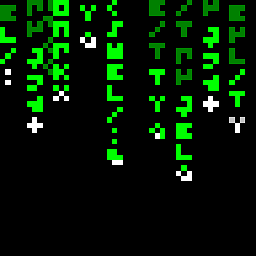 icecreamsword over 6 yearsI can't speak for Terje, though I don't believe there is any sort of patent encumbrance on his algorithm. I wrote the assembly routines, and I have no interest in asserting rights to them; therefore they are public domain.
icecreamsword over 6 yearsI can't speak for Terje, though I don't believe there is any sort of patent encumbrance on his algorithm. I wrote the assembly routines, and I have no interest in asserting rights to them; therefore they are public domain. -
 Morten Jensen about 6 yearsThis is a great answer.
Morten Jensen about 6 yearsThis is a great answer. -
 Wayne Uroda about 5 yearsNot only is this really useful, but also really interesting :) Thank you. I'd up vote you more if I could!
Wayne Uroda about 5 yearsNot only is this really useful, but also really interesting :) Thank you. I'd up vote you more if I could! -
 vitaut over 1 yearThat talk was removed for some reason so I replaced with a link to another one which also discusses this optimization.
vitaut over 1 yearThat talk was removed for some reason so I replaced with a link to another one which also discusses this optimization. -
 R.. GitHub STOP HELPING ICE over 1 yearIt's not just multiplying by the reciprocal; that would be floating point math and would be inaccurate because the reciprocal is not exactly representable. The technique is related but somewhat different.
R.. GitHub STOP HELPING ICE over 1 yearIt's not just multiplying by the reciprocal; that would be floating point math and would be inaccurate because the reciprocal is not exactly representable. The technique is related but somewhat different.
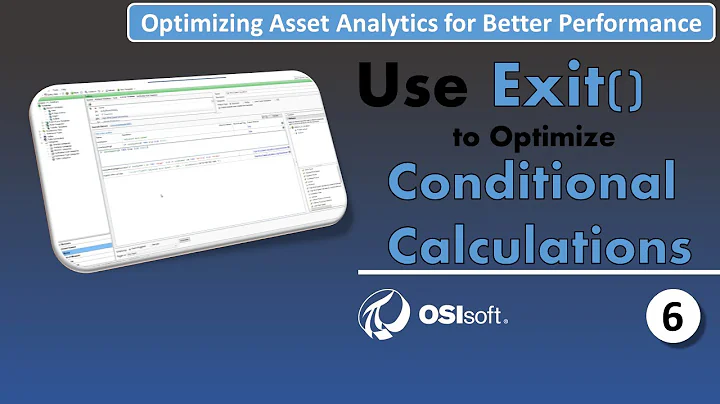

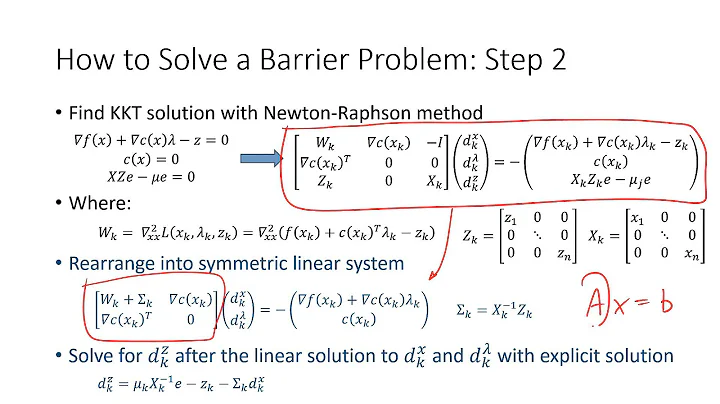


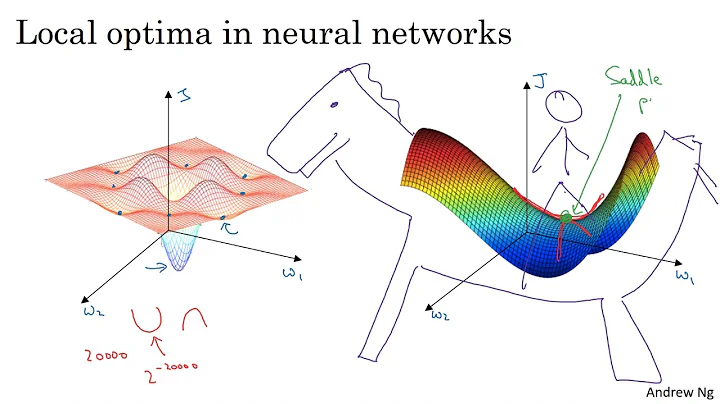
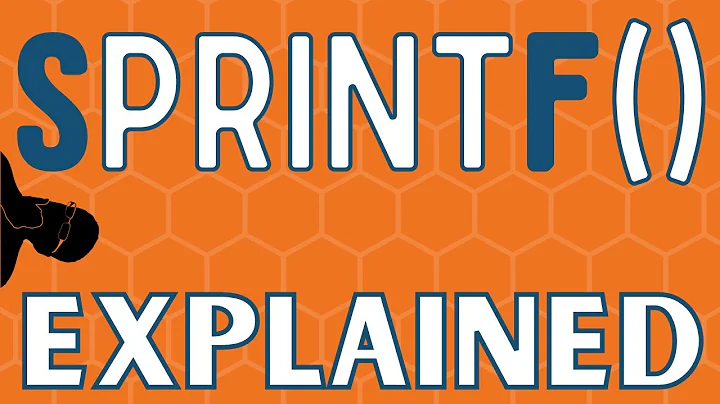
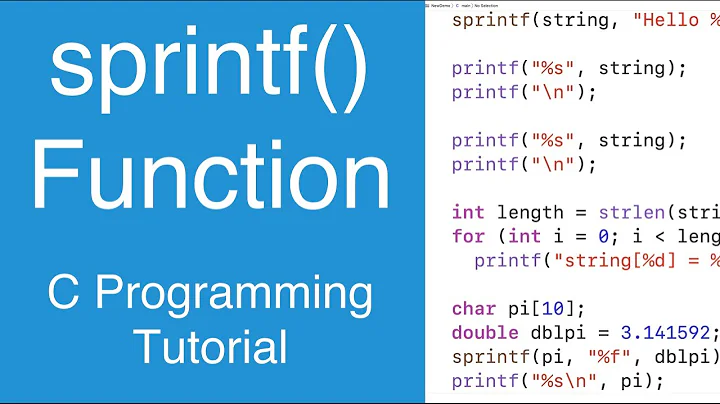
![stdlib.h (Standard library functions) in C | atof(), atoi(), itoa(), qsort(), bsearch() [Live Class]](vi/QCF4RVYBkdw/hq720_sqp--oaymwEcCNAFEJQDSFXyq4qpAw4IARUAAIhCGAFwAcABBg---rs-AOn4CLC5UoNckrbd2xdEHkUOapq1uBGuTg.jpg)